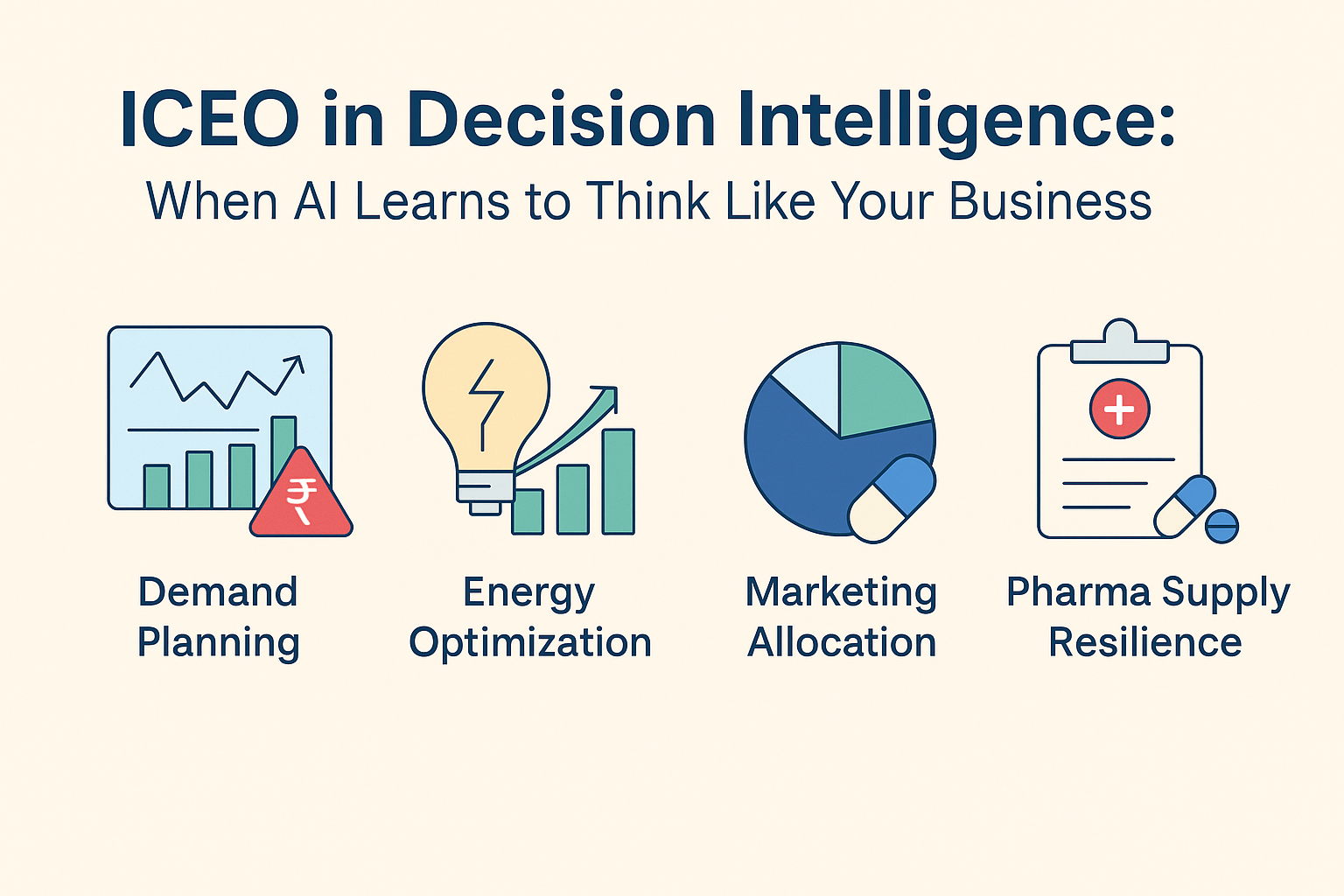ICEO in Decision Intelligence: When AI Learns to Think Like Your Business
Most organizations use AI to predict outcomes — demand, risk, price, or yield — and then plug those predictions into an optimization model.
It works well… until the model gets everything right statistically but wrong financially.
That’s when ICEO — Integrated Conditional Estimation–Optimization — steps in.
It doesn’t just forecast what’s likely. It learns how those forecasts affect your bottom-line decisions.
Example 1: Demand Planning
Traditional forecasting predicts that next month’s sales will be 10,000 units.
But what if running short costs you ₹500 per unit while overstocking only costs ₹50 per unit?
ICEO recognizes that asymmetry.
It doesn’t treat 10,500 and 9,500 as equally bad misses.
Instead, it learns a probabilistic demand curve and trains itself to minimize expected profit loss, not statistical error.
The result: smarter stocking decisions that protect margins — even when the world doesn’t follow your averages.
Example 2: Energy Optimization
A manufacturing plant uses machine learning to forecast energy use.
But the optimizer still works in a separate loop — it reacts after the forecast.
ICEO merges the two.
It learns the joint relationship between contextual data (temperature, batch load, runtime) and downstream optimization (load scheduling, power tariffs).
Every forecast iteration is evaluated based on its impact on total energy cost, not on RMSE.
The outcome?
Up to 15% reduction in power bills, not because the model predicted energy better — but because it learned how energy decisions behave under uncertainty.
Example 3: Marketing Allocation
When allocating marketing budgets across channels, a typical model predicts conversions per dollar spent.
ICEO goes a step further.
It learns the conditional distribution of responses by channel — not just expected ROAS — and optimizes allocation directly on expected profit gain.
That means if digital ads have high variance but big upside, ICEO learns when to push the risk, and when to pull back.
It’s not guessing spend — it’s optimizing for regret minimization under uncertainty.
Example 4: Pharma Supply Resilience
In pharma manufacturing, the real risk isn’t just demand fluctuation — it’s regulatory batch rejection.
ICEO models the full uncertainty of both demand and quality outcomes.
When training, it evaluates each probabilistic scenario through the lens of downstream production cost, compliance penalties, and holding cost.
So the “forecast” it produces is already tuned to make the most resilient production plan, not the most accurate number.
The Point
ICEO isn’t about predicting better.
It’s about teaching AI to care about what the business cares about — profit, service level, energy efficiency, or regulatory risk.
It replaces the “predict-then-optimize” gap with an end-to-end learning loop where estimation and optimization evolve together.
The result is decision intelligence that is:
- Context-aware — learns from features that actually drive uncertainty.
- Cost-aware — measures success in financial impact, not in error percentage.
- Decision-stable — robust even with small data or shifting market conditions.
